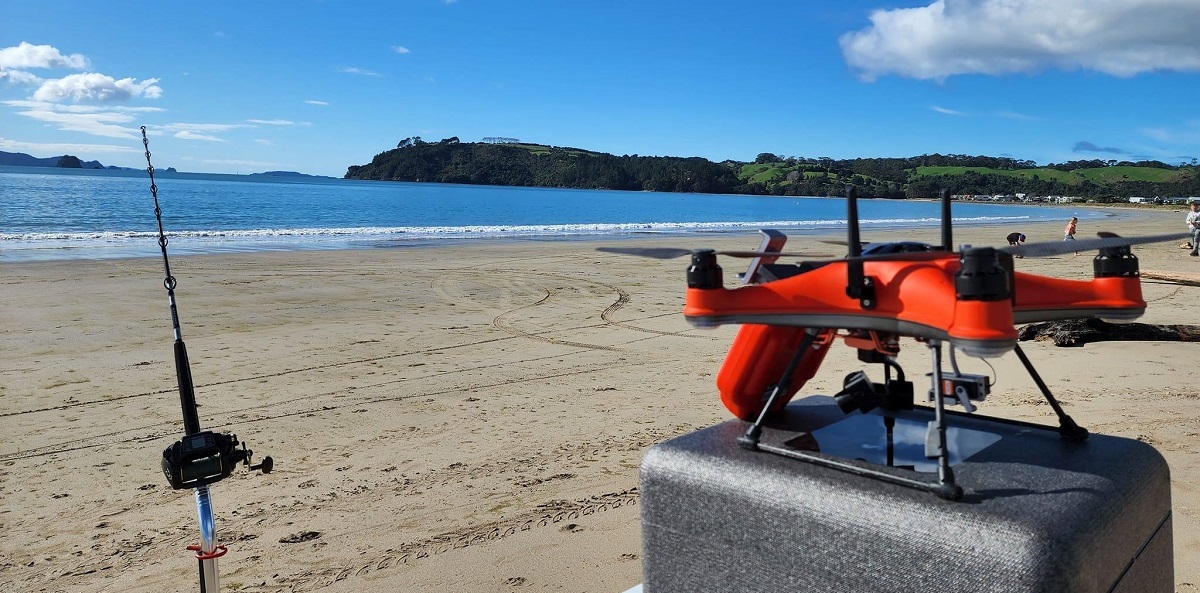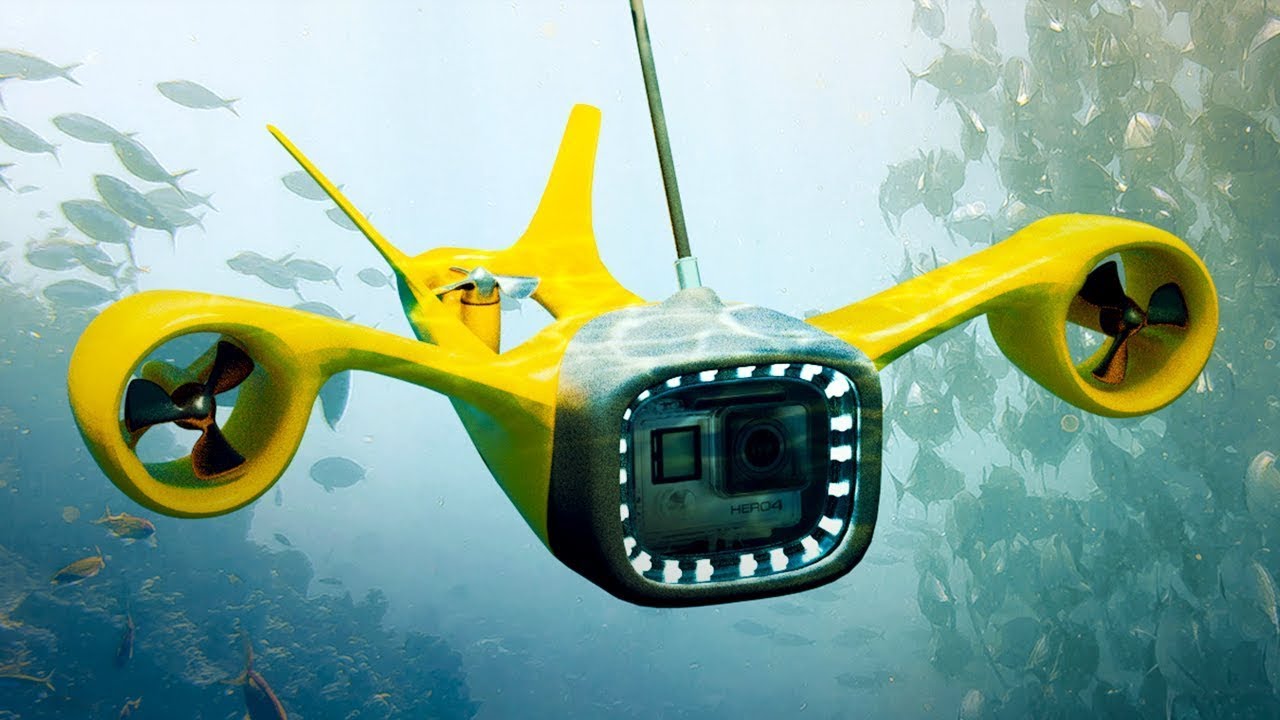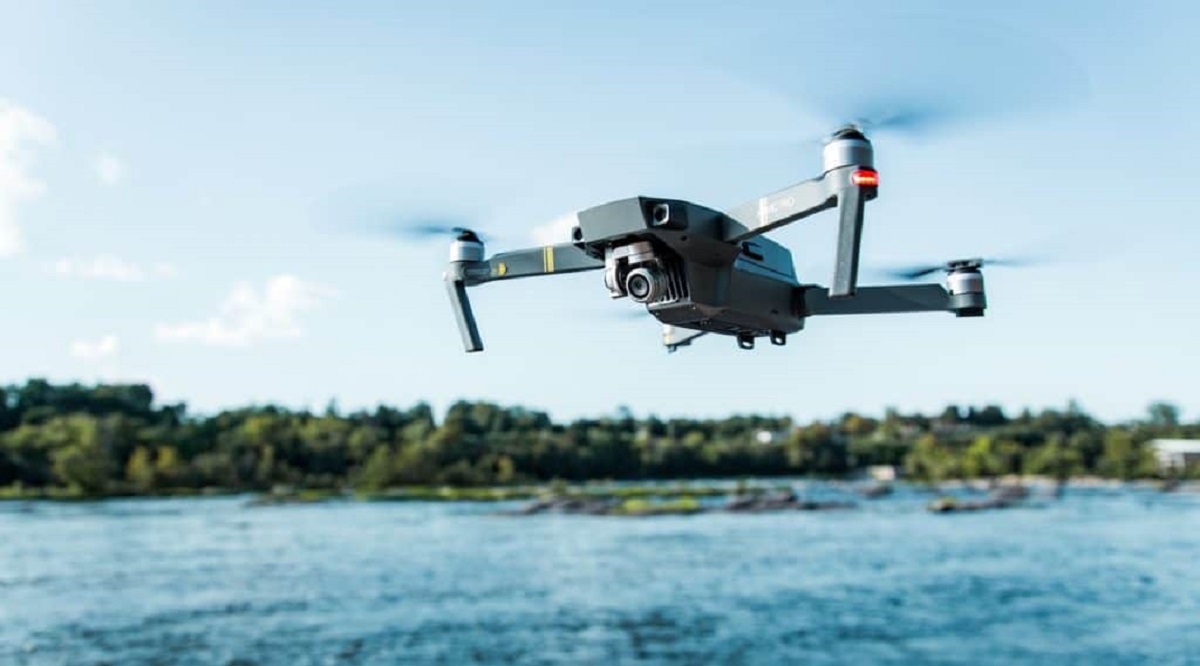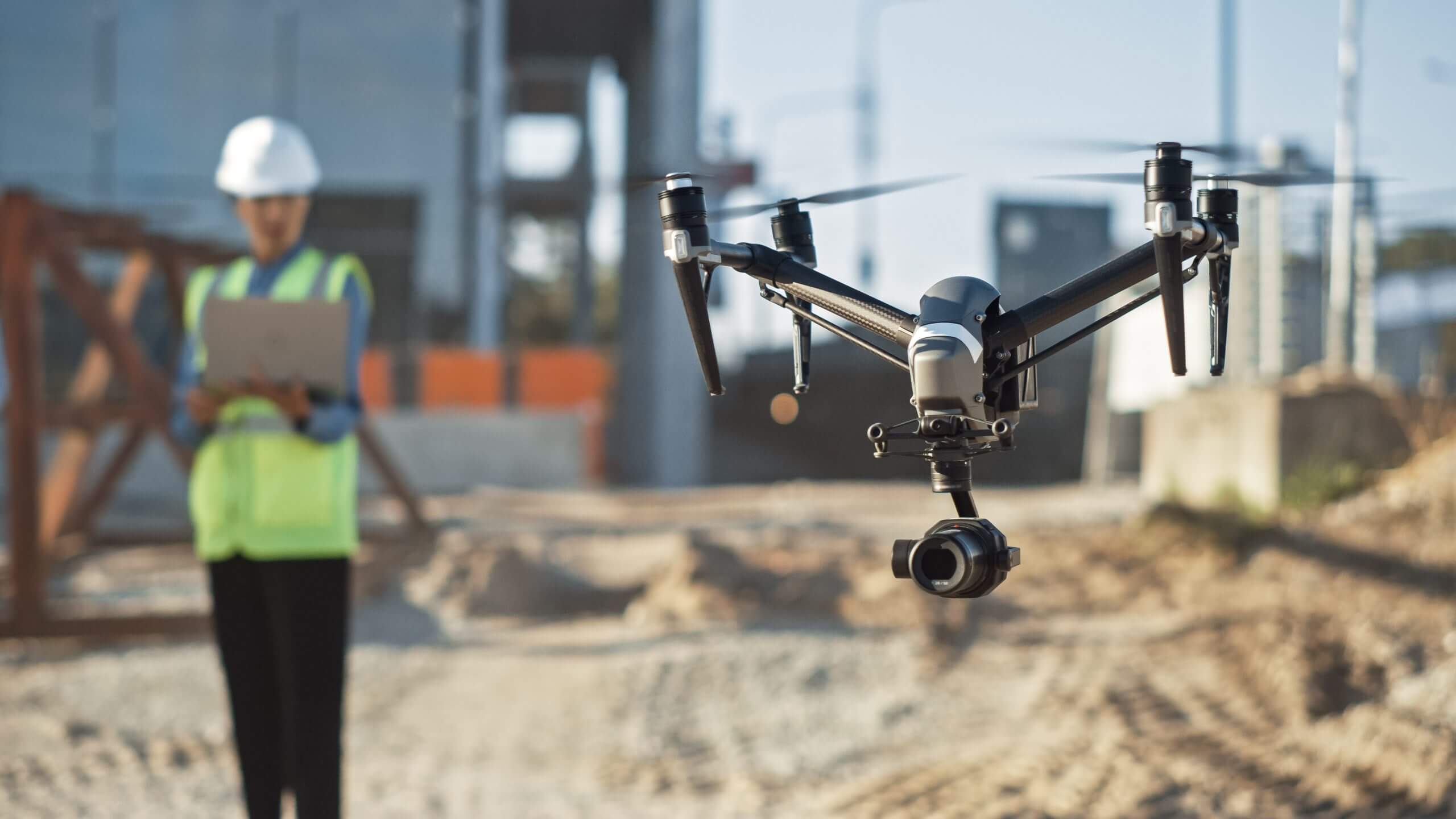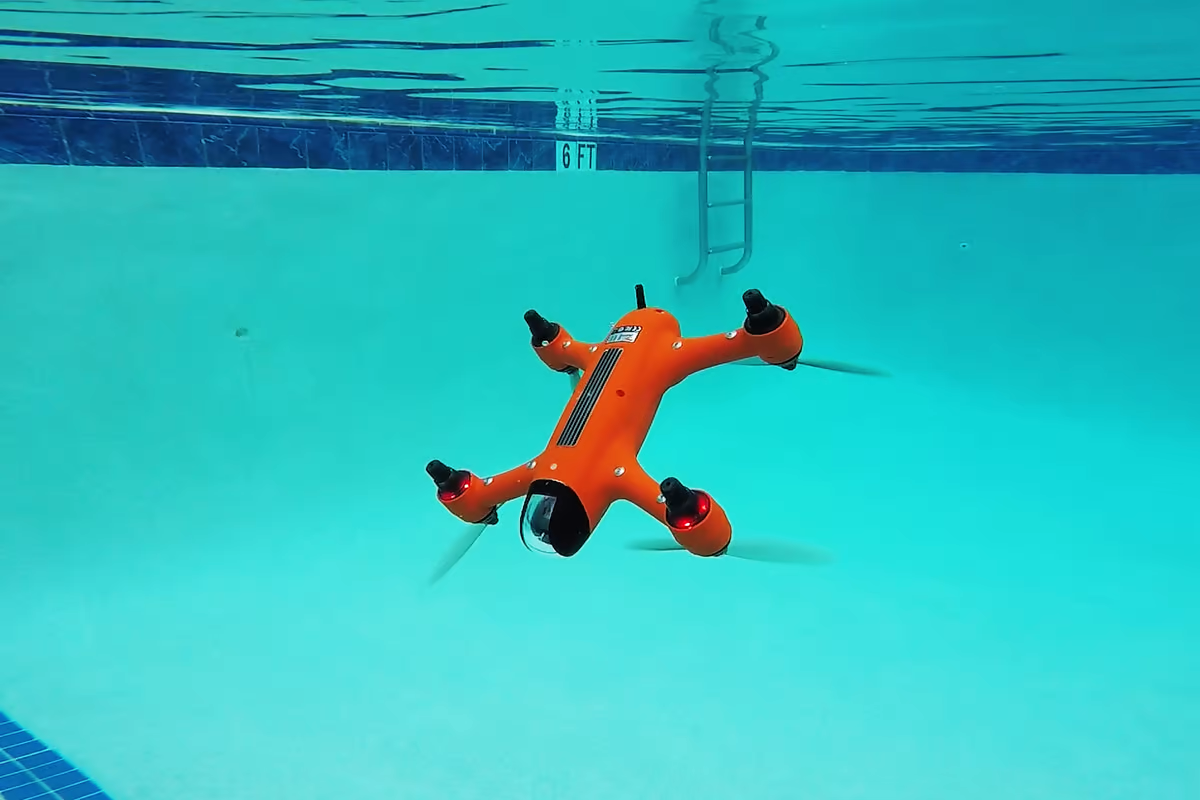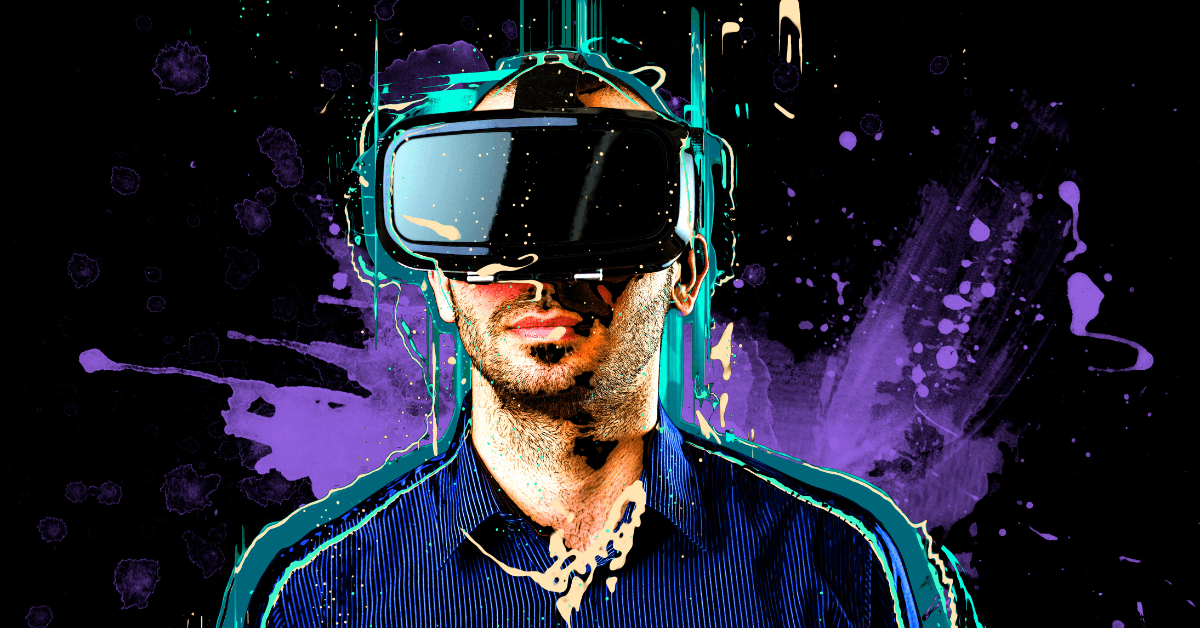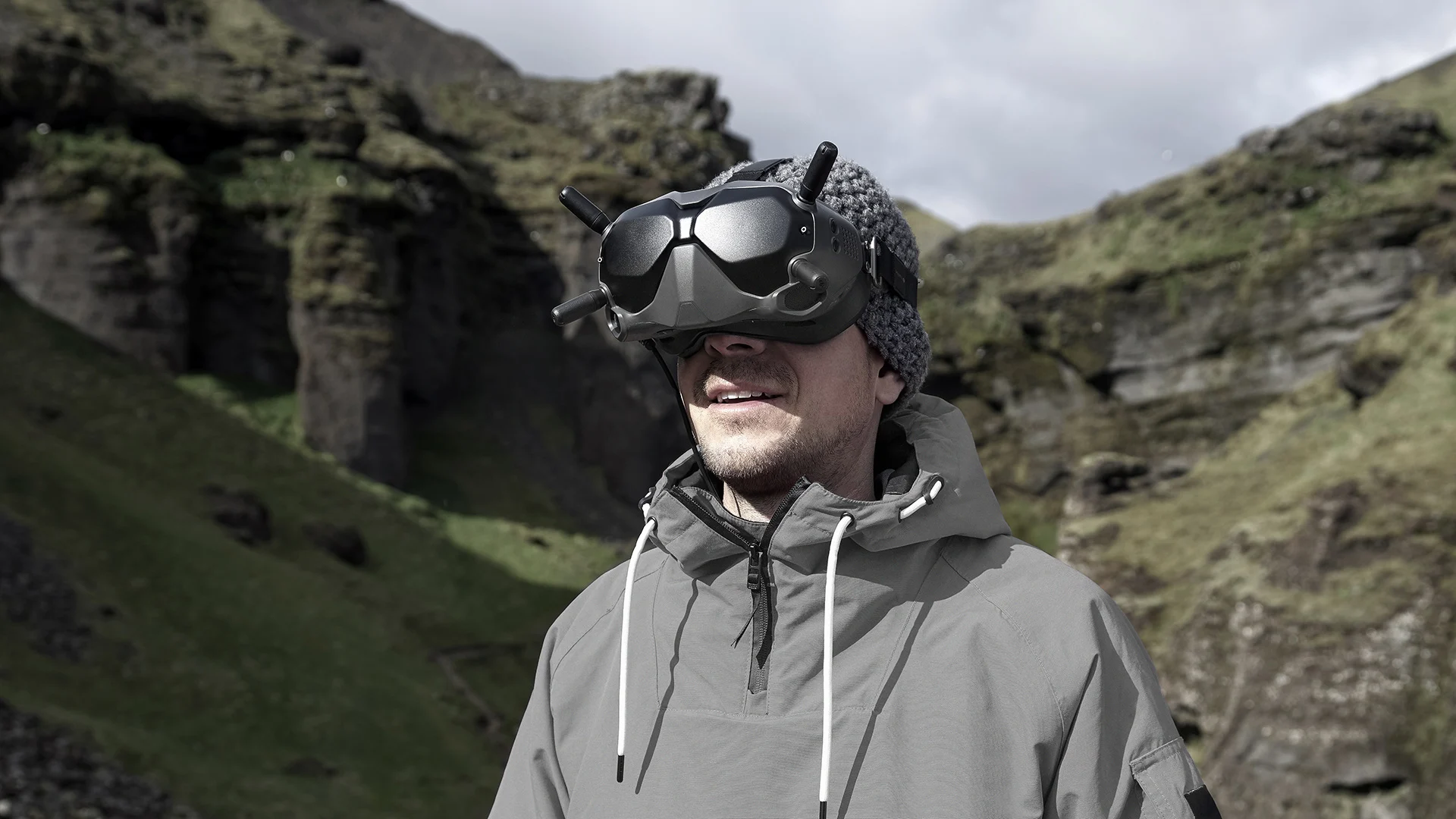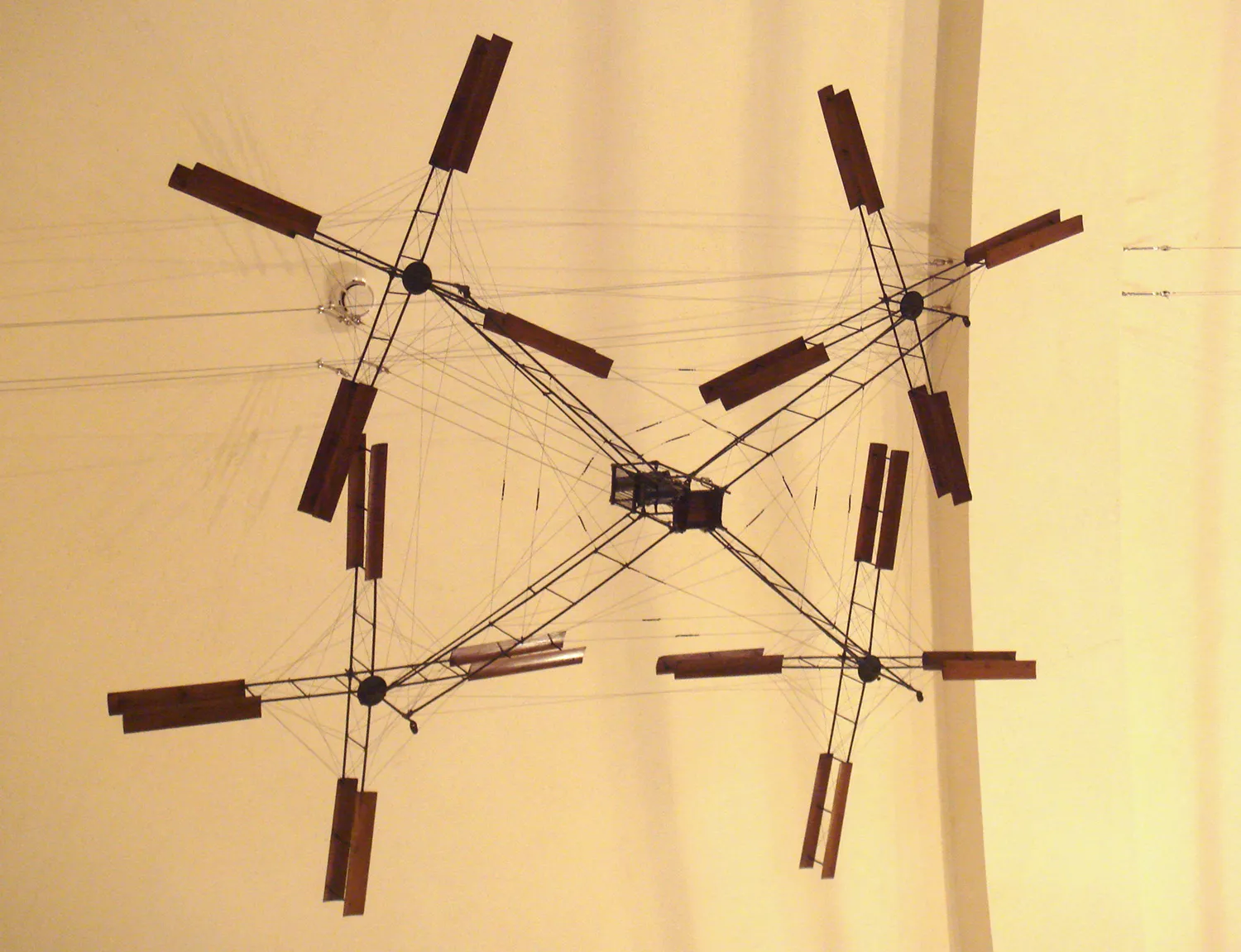Introduction
Technology has revolutionized the way we do countless activities, and fishing is no exception. In recent years, a new trend has emerged in the fishing world – drone fishing. This innovative approach combines the thrill of fishing with the capabilities of unmanned aerial vehicles, creating a unique and exciting experience for anglers of all skill levels.
Drones, also known as unmanned aerial vehicles (UAVs), were originally developed for military purposes. However, their popularity has skyrocketed in the civilian market due to their versatility and adaptability. As these advanced gadgets become more accessible and affordable, enthusiasts have found new and creative ways to utilize them, including in the realm of fishing.
Drone fishing has steadily gained traction among fishing enthusiasts around the globe. It offers an entirely new perspective on the sport, enabling anglers to reach previously inaccessible fishing spots and cast their lines far beyond the capabilities of traditional fishing methods. Whether you’re a seasoned angler looking to elevate your fishing game or a novice eager to try something different, drone fishing opens up a world of possibilities.
In this article, we will explore the captivating world of drone fishing, diving into its history, how it works, the benefits it offers, and the legal and safety considerations to keep in mind. Additionally, we will provide a beginner’s guide, share some inspiring drone fishing stories, and highlight the best drones for fishing. So grab your fishing gear and prepare to embark on an exhilarating journey into the realm of drone fishing!
What Are Drones?
Drones, also known as unmanned aerial vehicles (UAVs), are remotely piloted aircraft that have gained immense popularity in recent years. These small, lightweight, and maneuverable devices are equipped with propellers and a camera, allowing them to fly autonomously or be controlled by a remote operator from the ground. Drones are typically battery-powered and come in various sizes and designs, ranging from palm-sized mini drones to larger professional-grade models.
The advancements in drone technology have enabled them to perform a wide range of tasks and functions. Originally developed for military applications, drones are now widely used in various sectors such as photography, videography, agriculture, search and rescue operations, and even package delivery. With their ability to hover, maneuver, and capture high-definition aerial footage, drones have become an invaluable tool for capturing breathtaking aerial shots and providing unique perspectives.
The versatility of drones extends beyond photography and videography, as they have found their place in the world of fishing. Anglers have embraced the use of drones to enhance their fishing experience and increase their chances of success. Equipped with powerful cameras, drones allow fishermen to scout for fish, identify underwater structures, and locate schools of fish in real-time. By providing a bird’s-eye view, drones can assist anglers in determining the best spots to cast their lines and improve their overall fishing strategy.
In addition to their cameras, drones also come with advanced features such as GPS navigation, obstacle avoidance systems, and stabilized gimbal mounts for capturing smooth footage. These capabilities make drones highly reliable and easy to operate, even for beginners. Furthermore, many drones offer long flight times and extended range, enabling anglers to explore and cover a larger fishing area.
It is important to note that not all drones are suitable for fishing. Specialized fishing drones are designed with waterproofing capabilities and payload systems to carry and release bait or fishing lines. These drones often feature robust construction, powerful motors, and specialized fishing accessories, making them ideal for dedicated fishing enthusiasts. Whether you prefer a standard drone for scouting or a specialized fishing drone, there are options available to suit every angler’s needs and budget.
The Evolution of Drone Fishing
The concept of using drones for fishing is a relatively new phenomenon that has rapidly gained traction among fishing enthusiasts worldwide. This innovative approach to angling has revolutionized the sport and opened up new possibilities for anglers of all skill levels.
The idea of using aerial platforms to assist in fishing can be traced back to the early 2000s when remote-controlled helicopters equipped with fishing tackle were used as a novelty. However, the real breakthrough came with the rise of consumer-grade drones in the mid-2010s. With improved technology and affordability, drones became accessible to a wider audience, including fishing enthusiasts.
Initially, anglers started using off-the-shelf drones primarily for scouting purposes. The ability to fly high above the water and capture aerial footage provided valuable information about potential fishing spots, such as the presence of fish, underwater structures, and currents. This allowed anglers to make more informed decisions and increase their chances of success.
As the popularity of drone fishing grew, dedicated fishing drones began to emerge in the market. These specialized drones were designed specifically for fishing purposes, with features such as waterproofing, bait release mechanisms, and enhanced payload capacities. Anglers soon realized the immense potential of these purpose-built fishing drones, as they offered more precise control, advanced fishing capabilities, and increased efficiency.
One of the significant advancements in drone fishing came with the development of underwater drones. These innovative devices, also known as remotely operated vehicles (ROVs), can be deployed below the water’s surface to explore and monitor the underwater environment. With high-definition cameras and powerful lights, underwater drones enable anglers to get a glimpse of what’s happening beneath the water, identify fish species, and locate potential fishing hotspots.
Furthermore, the integration of artificial intelligence (AI) and machine learning technologies has propelled the capabilities of fishing drones even further. AI-powered drones can analyze data such as water temperature, salinity, and fish behavior patterns to provide real-time fishing recommendations. This level of sophistication greatly assists anglers in making informed decisions and optimizing their fishing strategies.
It is worth noting that the evolution of drone fishing is a continuous process. With ongoing advancements in drone technology, we can expect even more innovative features and functionalities to be introduced in the future. As fishing enthusiasts continue to explore the possibilities and push the boundaries of drone fishing, the sport is likely to continue evolving and captivating anglers worldwide.
How Does Drone Fishing Work?
Drone fishing combines the best of drone technology with the traditional art of fishing, creating a unique and exciting approach to angling. Whether you’re a seasoned angler or a beginner, understanding how drone fishing works will help you make the most of this innovative technique.
The first step in drone fishing is selecting the right drone for the job. Depending on your requirements and budget, you can choose from a wide range of drones available in the market. Some anglers opt for standard consumer drones equipped with advanced camera capabilities for scouting purposes, while others prefer specialized fishing drones designed specifically for angling purposes. These fishing drones often come with waterproofing features, bait release mechanisms, and increased payload capacities.
Once you have your drone, the next step is to familiarize yourself with its controls and capabilities. Most drones are equipped with remote controllers that allow you to maneuver the aircraft in different directions, adjust altitude, and control the camera angle. It’s important to practice flying your drone in an open, spacious area to become comfortable with its controls and handling.
When you’re ready to go fishing, launch your drone from a safe and open area, away from any obstructions or people. Ascend to a suitable altitude that provides a clear view of the fishing area. Use the drone’s camera to scout for fish, locate schools, and identify underwater structures such as reefs, rocks, or vegetation that may attract fish.
Once you have identified a suitable fishing spot, it’s time to deploy your fishing gear. For standard drones, this may involve manually flying your drone to a specific location and dropping the fishing line or bait. Specialized fishing drones offer an advantage with their bait release mechanisms, allowing you to attach your fishing line or bait directly to the drone. With a push of a button, the drone releases the line or bait at the desired location, eliminating the need for manual intervention.
Once your fishing line is in the water, you can monitor the action using the drone’s camera feed. Keep an eye out for bites or any signs of fish activity. If you’re using an underwater drone, you can explore the underwater environment in real-time and observe fish behavior patterns or potential catch targets.
It’s important to note that drone fishing still requires skill, knowledge of fishing techniques, and understanding of local fishing regulations. Always follow local fishing guidelines and regulations, respect the environment, and prioritize the safety of yourself and others. Additionally, be mindful of weather conditions and ensure that you have the necessary permits or licenses if required.
As drone technology continues to advance, we can expect further improvements and enhancements in drone fishing techniques. Whether you’re using a standard drone for scouting or a specialized fishing drone, the seamless integration of technology and angling opens up new horizons for exciting and rewarding fishing adventures.
Benefits of Drone Fishing
Drone fishing offers a range of benefits that have enticed anglers to embrace this innovative approach to the sport. By combining the capabilities of drones with traditional fishing techniques, anglers can experience numerous advantages that enhance their fishing experience and increase their chances of success.
One of the primary benefits of drone fishing is the ability to access and fish in remote or hard-to-reach areas. Drones can fly over water bodies, rugged terrains, or inaccessible shorelines, allowing anglers to cast their lines to spots that would otherwise be difficult or impossible to reach. This opens up a world of unexplored fishing opportunities, increasing the chances of hooking a prized catch.
Another advantage of drone fishing is the ability to obtain a bird’s-eye view of the fishing area. Drones equipped with high-definition cameras provide real-time footage and aerial perspectives, enabling anglers to identify fish, locate schools, and spot underwater structures or feeding grounds. This valuable information helps anglers make informed decisions about where to cast their lines and increases the likelihood of a successful catch.
Drones also offer convenience and time-saving benefits. Anglers no longer have to spend hours scouting for potential fishing spots manually. With a drone, they can quickly survey large areas and cover more ground in a fraction of the time. This allows anglers to maximize their fishing time and focus on the actual angling experience rather than wasting time searching for fish.
Additionally, drone fishing enhances safety for anglers. Instead of wading into unfamiliar or hazardous waters, anglers can use drones to explore the area and assess any potential dangers. This reduces the risk of accidents or injuries and ensures a safer fishing experience overall.
The use of drones also adds an element of excitement and novelty to traditional fishing. It provides a new dimension to the sport, blending technology with angling skills. Drone fishing enthusiasts enjoy the thrill of controlling the drone, capturing stunning aerial shots, and witnessing the fishing action unfold from a unique perspective.
Furthermore, drone fishing encourages conservation and ethical angling practices. With the ability to scout and locate fish more effectively, anglers can target specific species and avoid overfishing or inadvertently damaging fragile ecosystems. The information provided by drones allows anglers to make informed decisions about catch and release practices, fostering a more sustainable approach to fishing.
In summary, drone fishing offers anglers several compelling benefits. It provides access to remote areas, offers a bird’s-eye view of fishing spots, saves time and effort, enhances safety, adds excitement and novelty to the fishing experience, and encourages conservation practices. As technology continues to advance, drone fishing is sure to become even more captivating and rewarding for anglers worldwide.
Drone Fishing vs Traditional Fishing
Drone fishing has introduced a new dimension to the traditional sport of fishing, offering anglers an alternative approach with unique advantages. While both drone fishing and traditional fishing have their merits, understanding the differences between the two can help anglers choose the method that best suits their preferences and fishing goals.
One of the key distinctions between drone fishing and traditional fishing is the ability to access hard-to-reach fishing spots. Traditional fishing methods often restrict anglers to areas that can be reached by casting from the shoreline or by boat. In contrast, drones can fly over water bodies, traverse rugged terrains, and explore remote locations. This gives drone anglers a significant advantage in reaching fishing spots that are otherwise inaccessible, increasing the likelihood of encountering untapped fishing grounds and less pressured fish.
Another notable difference is the scouting capability provided by drones. Traditional anglers rely on their knowledge, experience, and intuition to identify potential fishing spots. Conversely, drones equipped with high-definition cameras provide an aerial perspective, allowing anglers to locate fish, identify underwater structures or feeding grounds, and make more informed decisions about where to fish. This scouting advantage can save time and effort, leading to more productive fishing sessions.
In terms of convenience, traditional fishing methods can require more physical exertion and time-consuming preparations such as rigging tackle, launching boats, or wading into waters. Drone fishing offers a quicker setup, allowing anglers to launch their drone and start scouting or fishing almost immediately. Drones also enable anglers to cover a larger fishing area in less time, maximizing their angling opportunities and potentially increasing their catch rate.
However, traditional fishing methods hold their own appeal and advantages. Many anglers cherish the hands-on experience of casting, reeling in fish, and feeling the tug on their fishing line. Traditional fishing techniques often involve a deeper connection to nature and the environment, as anglers can immerse themselves in the surroundings and observe the behavior of fish firsthand.
Furthermore, traditional fishing allows for a wider range of techniques and styles. Anglers can choose from various rod and reel combinations, use different bait presentations, and experiment with different fishing strategies. This versatility and adaptability give traditional anglers the freedom to adjust their approach based on the prevailing conditions and the behavior of the fish.
Lastly, it is important to consider the cost factor. Drone fishing may require an initial investment in purchasing a drone and the necessary fishing accessories. Traditional fishing, on the other hand, usually involves owning fishing gear and equipment specific to the targeted species or fishing environment. The cost of maintenance and repairs may also vary between the two methods.
In essence, both drone fishing and traditional fishing have their unique advantages and appeal. Drone fishing offers accessibility to remote spots, scouting capabilities, and convenience, while traditional fishing provides a deeper connection to nature, versatility in techniques, and a hands-on angling experience. Anglers can choose the method that aligns with their fishing goals, preferences, and the type of angling experience they seek.
Legal and Safety Considerations for Drone Fishing
While drone fishing offers exciting opportunities, it is essential for anglers to understand and adhere to the legal and safety considerations associated with its use. By being knowledgeable and responsible, anglers can enjoy the benefits of drone fishing while minimizing risks and ensuring compliance with regulations.
First and foremost, it is crucial to familiarize yourself with the local drone regulations and laws in your area. Different countries and regions may have specific rules governing the operation of drones, including where you can fly, altitude restrictions, and registration requirements. Familiarize yourself with these regulations to ensure you are operating within the legal boundaries.
Safety is paramount when using drones for fishing. Always operate your drone in a responsible and considerate manner, keeping in mind the safety of yourself, others, and the surrounding environment. Be aware of your surroundings and avoid populated areas and crowded spaces. Ensure you have clear visibility, especially when flying over water, to prevent accidents or collisions.
Maintaining visual line of sight (VLOS) with your drone is essential for safety and compliance. Always keep the drone within your line of sight to ensure you can monitor its flight and avoid potential obstacles. This is especially important when flying near water, as the risk of losing sight of the drone increases over large bodies of water.
Respecting wildlife and the environment is also crucial. Avoid flying drones near nesting or sensitive wildlife areas to minimize disturbance and potential harm. Additionally, be mindful of noise pollution, as drones can generate noise that may disturb wildlife, other anglers, or nearby residents.
When fishing with a drone, it is important to remember that the aerial perspective provided by the drone’s camera does not exempt you from adhering to fishing regulations. Familiarize yourself with local fishing laws, such as catch limits, size restrictions, and fishing seasons. Respect catch and release practices, and avoid targeting protected or endangered species.
Furthermore, drone fishing requires careful consideration of the fishing line and bait deployment. Ensure that your fishing line is properly attached to the drone and securely connected to the bait or hook. Avoid flying drones over people or densely populated areas when deploying your fishing line to prevent potential accidents or injury.
Lastly, weather conditions play a significant role in drone fishing safety. Always check the weather forecast before heading out and avoid flying your drone in adverse weather conditions, such as strong winds or rain. High winds can affect the stability and control of the drone, increasing the risk of accidents or loss of control.
By adhering to legal requirements, practicing responsible drone operation, prioritizing safety, and respecting the environment and fishing regulations, anglers can enjoy the benefits of drone fishing in a responsible and sustainable manner. Always stay up to date with changing regulations and guidelines to ensure a safe and enjoyable drone fishing experience.
A Beginner’s Guide to Drone Fishing
If you’re new to the world of drone fishing, getting started can be both exciting and overwhelming. To help you embark on your drone fishing journey with confidence, we’ve put together a beginner’s guide that covers the essential steps and considerations.
1. Choose the right drone: Selecting the right drone for fishing is crucial. Consider factors such as flight time, range, payload capacity, and waterproofing capabilities. Choose a drone that fits your budget and meets your fishing needs.
2. Familiarize yourself with drone operation: Before taking your drone fishing, spend time practicing flying and familiarizing yourself with the controls. Practice flying in an open area to gain confidence and understand how your drone responds to different commands.
3. Learn the local regulations: Familiarize yourself with the drone regulations in your area. Understand where you can fly, any altitude restrictions, and any permits or licenses required. Failure to comply with regulations may result in fines or legal issues.
4. Ensure safe flying: Prioritize safety when operating your drone. Choose open areas away from people, buildings, and power lines. Maintain visual line of sight with the drone at all times and be mindful of weather conditions that may affect the stability and control of the drone.
5. Scout for fishing spots: Use the drone’s camera to scout potential fishing spots. Look for signs of fish, schools, underwater structures, or feeding grounds. This will help you make informed decisions about where to cast your line.
6. Deploying your fishing gear: Depending on your drone, you may manually fly the drone to the desired spot and drop the fishing line or bait. Alternatively, if you have a specialized fishing drone, utilize its bait release mechanism. Ensure the fishing line is securely attached to the drone and properly connected to the bait or hook.
7. Monitor fishing activity: Utilize the drone’s camera feed to monitor for fish bites or any signs of fish activity. Adjust your fishing technique or move to a different location based on the feedback you receive from the drone’s camera.
8. Respect fishing regulations: Remember to adhere to local fishing regulations such as catch limits, size restrictions, and fishing seasons. Respect catch and release practices and avoid targeting protected or endangered species.
9. Practice patience and persistence: Drone fishing, like traditional fishing, requires time and patience. It may take several attempts to find success. Learn from each fishing session, adapt your strategy, and enjoy the learning process.
10. Connect with the drone fishing community: Join online forums, social media groups, or local fishing clubs to connect with experienced drone anglers. Learn from their insights, share your experiences, and discover new tips and tricks.
By following these steps and exercising caution, you can start your drone fishing journey on the right foot. Remember to have fun, respect the environment, and prioritize safety at all times. Happy drone fishing!
The Best Drones for Fishing
Choosing the right drone for fishing is essential to ensure a successful and enjoyable experience. Several drones on the market are specifically designed for fishing purposes, offering features and capabilities tailored to enhance your angling adventures. Here are some of the best drones for fishing:
1. DJI Phantom 4 Pro: Known for its versatility and exceptional camera capabilities, the DJI Phantom 4 Pro is a popular choice among drone anglers. With a 20-megapixel camera and a range of intelligent flight modes, this drone provides high-quality aerial footage and easy maneuverability, making it ideal for scouting and capturing stunning fishing locations.
2. PowerVision PowerRay Wizard: Designed specifically for aquatic exploration, the PowerVision PowerRay Wizard is an underwater drone that is perfect for underwater fishing or observing fish behavior. It comes with a 4K camera, remote bait drop system, and fish finding capability, allowing you to locate fish and capture underwater footage effortlessly.
3. Swellpro SplashDrone 4: Built for fishing in all environments, the Swellpro SplashDrone 4 is a waterproof drone that can take off and land on water. Equipped with a 4K camera, advanced flight features, and payload release mechanism, it allows anglers to scout, drop baits, and monitor their fishing spots with ease.
4. Dronefish Hi5 Seeker: Designed specifically for fishing, the Dronefish Hi5 Seeker is a specialized fishing drone with advanced features such as bait release mechanism and waterproofing. It offers a long flight time, extended range, and stable flight performance, making it an excellent choice for dedicated drone anglers.
5. PowerDolphin Wizard: Combining the features of a drone and a remote-controlled boat, the PowerDolphin Wizard is versatile and perfect for both aerial and underwater exploration. With its advanced fishing capabilities, including fish-finding sonar and bait delivery system, this drone is a popular choice among fishing enthusiasts.
6. Autel Robotics EVO II: Offering a combination of portability, performance, and image quality, the Autel Robotics EVO II is a top-tier drone for fishing. It features a high-resolution camera, excellent flight performance, and various intelligent flight modes to capture breathtaking aerial footage and scout fishing spots effectively.
When choosing a drone for fishing, consider your specific requirements, budget, and fishing style. Look for drones with long flight times, extended range, a stable flight experience, and excellent camera capabilities to capture scenic aerial footage and monitor fishing activity. Additionally, waterproofing features and specialized fishing accessories such as bait release mechanisms can enhance your fishing experience.
Remember to familiarize yourself with local drone regulations and fly responsibly to ensure a safe and legal fishing experience. With the right drone in your arsenal, you’ll be ready to explore new fishing spots, capture stunning footage, and elevate your angling adventures to new heights.
Tips and Tricks for Successful Drone Fishing
Drone fishing is a thrilling and innovative way to enhance your fishing experience. To make the most out of your drone fishing adventures, here are some helpful tips and tricks that can lead to a successful outing:
1. Scout in advance: Before heading out to fish, spend time scouting potential fishing spots using your drone. Look for signs of fish, underwater structures, or feeding grounds. This will help you determine the most promising locations to maximize your chances of landing a catch.
2. Experiment with camera angles: Explore different camera angles and perspectives to get the best view of the water and potential fishing areas. Adjust the drone’s camera angle to capture clear and detailed footage that helps you analyze fish behavior and spot schools of fish.
3. Consider weather conditions: Pay attention to weather conditions before your fishing trip. Wind, rain, and poor visibility can impact your drone’s flight and make fishing more challenging. Choose calm, clear days with favorable weather for optimal drone fishing conditions.
4. Use a landing pad: When launching and landing your drone, use a landing pad or a soft, debris-free surface. This helps protect the drone’s propellers and camera and prevents dirt or water from damaging the equipment.
5. Monitor battery life: Keep a close eye on your drone’s battery life to ensure a safe return to the launch site. Plan your flights and fishing activity accordingly to avoid draining the battery while fishing or scouting.
6. Master the art of bait release: If your drone is equipped with a bait release mechanism, practice deploying your fishing line or bait accurately. Develop the skill to drop the line precisely to your desired fishing spot to increase your chances of attracting fish.
7. Adjust fishing techniques: Adapt your fishing techniques based on the information gathered from your drone. If you notice fish activity in a particular area, adjust your presentation, bait choice, or retrieve speed accordingly to increase your likelihood of enticing a strike.
8. Stay patient and observant: Drone fishing may require patience as you locate and entice fish to bite. Observing fish behavior, water conditions, and potential feeding patterns can provide valuable insights and help you strategize more effectively.
9. Share and learn from others: Join drone fishing communities, online forums, or social media groups to connect with other anglers. Sharing experiences, tips, and techniques with fellow drone fishing enthusiasts can enhance your knowledge and improve your skills.
10. Respect fishing etiquette: Always practice good fishing etiquette and respect other anglers sharing the water. Maintain a safe distance from other drones or anglers to prevent interference and potential accidents.
By keeping these tips and tricks in mind, you can enhance your drone fishing experience. Stay adaptable, learn from each outing, and enjoy the unique combination of technology and angling that drone fishing provides.
Inspiring Drone Fishing Stories
Drone fishing has captured the imagination of anglers around the world, pushing the boundaries of traditional fishing techniques and unlocking exciting new possibilities. Here are some inspiring drone fishing stories that highlight the remarkable experiences and catches that drone anglers have had:
1. The Great Catch: John, an avid angler, used his drone to scout a remote lake’s shoreline that was inaccessible by foot. After identifying a promising spot, he launched his drone and deployed his fishing line with precision. Within minutes, he hooked a trophy-sized bass, a catch he would have missed if not for the strategic use of his drone.
2. Finding Hidden Gems: Sarah, an experienced drone angler, explored a secluded coastal area known for its rocky structure and abundant marine life. Using her drone’s camera, she discovered a hidden cove teeming with schools of fish. This newfound secret spot became her go-to fishing location, resulting in one memorable catch after another.
3. Rescue in Distress: Mike, a drone angler with a waterproof fishing drone, witnessed a distressed kayaker struggling to stay afloat in rough water. He quickly deployed his drone, skillfully dropping a life-saving flotation device to the struggling individual. Thanks to the drone’s swift intervention, the kayaker was successfully rescued, highlighting the potential humanitarian uses of drones in fishing environments.
4. Discovering Underwater Treasures: Ben, an underwater drone enthusiast, utilized his underwater drone to explore a sunken shipwreck known for holding valuable fishing gear lost over the years. Through his drone’s camera feed, he discovered a treasure trove of expensive lures, rods, and reels. This unexpected find not only enriched his fishing gear collection but also sparked his interest in underwater exploration.
5. Navigating Icy Waters: In northern regions, using drones for ice fishing has become increasingly popular. Tom, a seasoned ice angler, employed his drone to survey the frozen lake’s surface and identify the most promising fishing spots. With the drone’s help, he located a patch of open water under the ice where fish were actively feeding. This discovery led to a successful ice fishing adventure, even in challenging winter conditions.
These inspiring drone fishing stories showcase the endless possibilities and exciting experiences that await anglers willing to embrace this innovative approach. From uncovering hidden fishing spots and landing trophy-sized catches to aiding in rescues and exploring underwater wonders, drone fishing continues to amaze and captivate anglers worldwide.
Remember, each drone fishing adventure holds the potential for your own inspiring story. Stay curious, explore new horizons, and make the most out of the unique capabilities that drone fishing provides.
Conclusion
Drone fishing has emerged as an exciting and innovative approach to the traditional sport of fishing. With the ability to scout remote fishing spots, capture aerial footage, and enhance fishing strategies, drones have revolutionized the angling experience for enthusiasts worldwide.
Throughout this article, we have explored the various aspects of drone fishing, from understanding the basics of drones to the benefits they offer, legal and safety considerations, and inspiring stories from drone anglers. We’ve discussed the evolution of drone fishing and highlighted the best drones and techniques for a successful outing.
Drone fishing opens up a new realm of possibilities, allowing anglers to access previously unreachable fishing spots, scout for fish with ease, and gain a unique perspective on the water. The convenience, efficiency, and excitement that drones bring to fishing can greatly enhance the overall experience for anglers of all skill levels.
However, it is important to remember that responsible drone operation and compliance with local regulations are essential. Understanding and following drone laws, prioritizing safety, and respecting fishing regulations and etiquette contribute to a positive and sustainable drone fishing experience.
As drone technology continues to advance, we can anticipate even more innovative features and capabilities in the future. The potential for drone fishing is vast, and as drone anglers explore new techniques, share experiences, and push the boundaries, the sport will undoubtedly continue to evolve.
So, whether you’re a seasoned angler looking to elevate your fishing game or a newbie excited to try something different, consider embracing the world of drone fishing. Explore remote fishing spots, capture breathtaking footage, and experience the thrill of combining technology with the age-old art of fishing.
Remember, however, that while drones can enhance your fishing experience, the essence of fishing lies in the connection with nature, the thrill of the catch, and the joy of being outdoors. So, make the most out of your drone fishing adventures while keeping in mind the values that make fishing a beloved pastime.
Now, it’s time to embark on your own drone fishing journey and create your own stories and memories. So, grab your fishing gear, launch your drone, and let the exciting world of drone fishing unfold before you. Happy fishing!







